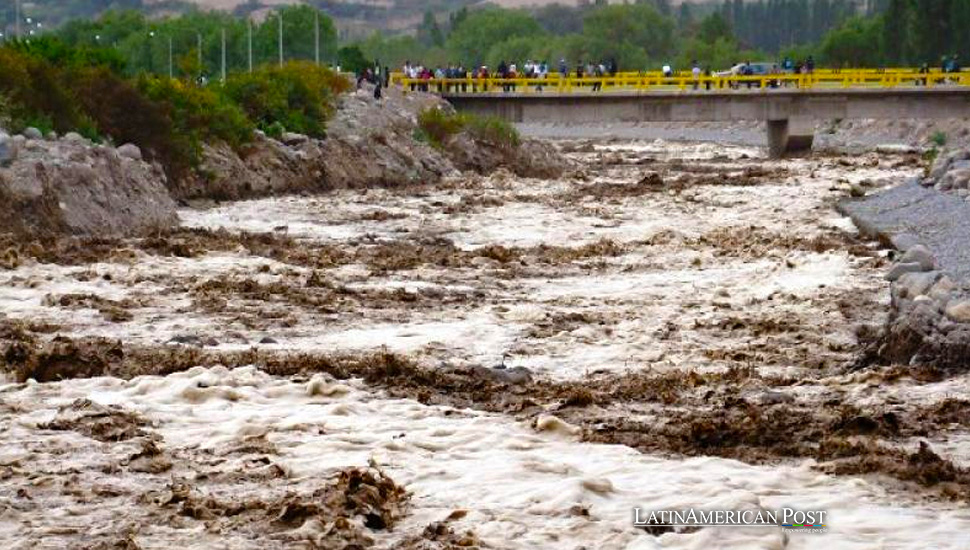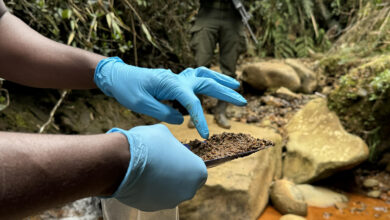Heavy Rains in Peru Leave Over 130 Displaced, Thousands Affected

The first days of the year have brought a deluge to Piura, a region in northern Peru, resulting in significant displacement and distress for thousands. On Monday, the National Civil Defense Institute (Indeci) reported that the relentless rains have left over 130 displaced and approximately 2,000 affected.
Responding to the Crisis: Immediate Relief Efforts
In response to this natural disaster, various sectors are actively engaged in relief efforts, aiming to address the immediate needs of the affected population. The Damage and Needs Assessment (EDAN) has determined that the emergency has resulted in 137 people being displaced, 48 homes rendered uninhabitable, and 60 hectares of crops lost.
Additionally, the situation has impacted 2,048 individuals, 696 homes, 200 meters of roadway, 60 meters of irrigation canals, and 0.5 hectares of crops. Despite the extensive damage to property and agriculture, there have been no reported casualties or injuries to the local populace.
Local Municipalities Take Center Stage
Local municipalities are playing a critical role in addressing the crisis. In Sondorillo, a district road remains blocked, allowing only pedestrian access to the Mandorcillo area. In Montero, the district municipality is coordinating the distribution of humanitarian aid to affected families. The Ministry of Housing, Construction, and Sanitation has dispatched heavy machinery to clear river channels, remove debris, and rehabilitate local roads.
The Regional Emergency Operations Center (COER) of Piura has added that authorities in the jurisdictions of Chalaco and Paimas are also coordinating the distribution of humanitarian aid and continuing the EDAN process. Through the National Emergency Operations Center (COEN), the Civil Defense is coordinating with regional and local authorities to monitor the situation and urging them to keep their emergency operation centers active.
Anticipating Future Challenges: El Niño and Climate Variability
These intense rains are part of Peru’s summer season, which extends until March. However, authorities are on high alert for potential increases in rainfall due to the El Niño climatic phenomenon. In mid-December, the Multisectoral Commission responsible for the National Study of the El Niño Phenomenon (Enfen) warned of upcoming intense rains on the north coast and droughts in the south.
In a recent update, Enfen predicted that the El Niño Costero phenomenon will likely continue with weak warm conditions until March. This forecast is based on the evolution of El Niño in the central Pacific and regional climatic variability.
The commission expects air temperatures along the north and central coast to remain above average, with rainfall in the north coast and highlands ranging from standard to above normal levels.
Peru’s Resilience Amidst Environmental Challenges
The situation in Piura reflects Peru’s broader challenge as it navigates the impacts of El Niño and regional climate variability. The ongoing relief efforts demonstrate the country’s resilience and commitment to supporting its citizens during natural disasters. As the region braces for more rainfall, the effectiveness of these efforts will be critical in mitigating the impact on the lives and livelihoods of those in affected areas.
Also read: Heavy rains begin to cause flooding and overflows in Peru
The severe weather conditions in Piura, Peru, have led to significant displacement and hardship for thousands. The collaborative response from various sectors, including local municipalities and national agencies, underscores the collective effort to provide relief and support to those impacted.
As Peru continues to face the challenges posed by El Niño and climate variability, its ability to respond and adapt to these environmental crises will be crucial in safeguarding its people and resources.




